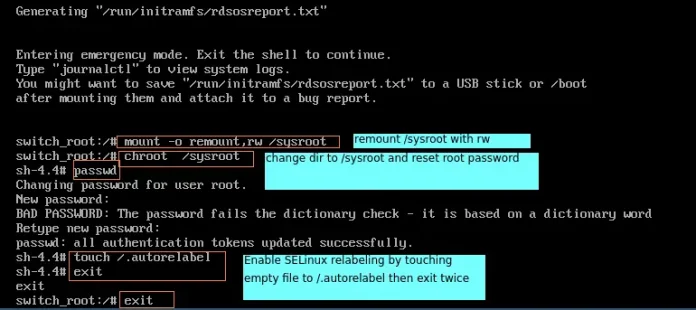Prerequisites: Socket Programming in Java
Multithreaded Server: A server having more than one thread is known as Multithreaded Server. When a client sends the request, a thread is generated through which a user can communicate with the server. We need to generate multiple threads to accept multiple requests from multiple clients at the same time.
Advantages of Multithreaded Server:
- Quick and Efficient: Multithreaded server could respond efficiently and quickly to the increasing client queries quickly.
- Waiting time for users decreases: In a single-threaded server, other users had to wait until the running process gets completed but in multithreaded servers, all users can get a response at a single time so no user has to wait for other processes to finish.
- Threads are independent of each other: There is no relation between any two threads. When a client is connected a new thread is generated every time.
- The issue in one thread does not affect other threads: If any error occurs in any of the threads then no other thread is disturbed, all other processes keep running normally. In a single-threaded server, every other client had to wait if any problem occurs in the thread.
Disadvantages of Multithreaded Server:
- Complicated Code: It is difficult to write the code of the multithreaded server. These programs can not be created easily
- Debugging is difficult: Analyzing the main reason and origin of the error is difficult.
Quick Overview
We create two java files, Client.java and Server.java. Client file contains only one class Client (for creating a client). Server file has two classes, Server(creates a server) and ClientHandler(handles clients using multithreading).
Client-Side Program: A client can communicate with a server using this code. This involves
- Establish a Socket Connection
- Communication
Java
import java.io.*;import java.net.*;import java.util.*; // Client classclass Client { // driver code public static void main(String[] args) { // establish a connection by providing host and port // number try (Socket socket = new Socket("localhost", 1234)) { // writing to server PrintWriter out = new PrintWriter( socket.getOutputStream(), true); // reading from server BufferedReader in = new BufferedReader(new InputStreamReader( socket.getInputStream())); // object of scanner class Scanner sc = new Scanner(System.in); String line = null; while (!"exit".equalsIgnoreCase(line)) { // reading from user line = sc.nextLine(); // sending the user input to server out.println(line); out.flush(); // displaying server reply System.out.println("Server replied " + in.readLine()); } // closing the scanner object sc.close(); } catch (IOException e) { e.printStackTrace(); } }} |
Server-Side Program: When a new client is connected, and he sends the message to the server.
1. Server class: The steps involved on the server side are similar to the article Socket Programming in Java with a slight change to create the thread object after obtaining the streams and port number.
- Establishing the Connection: Server socket object is initialized and inside a while loop a socket object continuously accepts an incoming connection.
- Obtaining the Streams: The inputstream object and outputstream object is extracted from the current requests’ socket object.
- Creating a handler object: After obtaining the streams and port number, a new clientHandler object (the above class) is created with these parameters.
- Invoking the start() method: The start() method is invoked on this newly created thread object.
2. ClientHandler class: As we will be using separate threads for each request, let’s understand the working and implementation of the ClientHandler class implementing Runnable. An object of this class acts as a Runnable target for a new thread.
- First, this class implements Runnable interface so that it can be passed as a Runnable target while creating a new Thread.
- Secondly, the constructor of this class takes a parameter, which can uniquely identify any incoming request, i.e. a Socket.
- Inside the run() method of this class, it reads the client’s message and replies.
Java
import java.io.*;import java.net.*; // Server classclass Server { public static void main(String[] args) { ServerSocket server = null; try { // server is listening on port 1234 server = new ServerSocket(1234); server.setReuseAddress(true); // running infinite loop for getting // client request while (true) { // socket object to receive incoming client // requests Socket client = server.accept(); // Displaying that new client is connected // to server System.out.println("New client connected" + client.getInetAddress() .getHostAddress()); // create a new thread object ClientHandler clientSock = new ClientHandler(client); // This thread will handle the client // separately new Thread(clientSock).start(); } } catch (IOException e) { e.printStackTrace(); } finally { if (server != null) { try { server.close(); } catch (IOException e) { e.printStackTrace(); } } } } // ClientHandler class private static class ClientHandler implements Runnable { private final Socket clientSocket; // Constructor public ClientHandler(Socket socket) { this.clientSocket = socket; } public void run() { PrintWriter out = null; BufferedReader in = null; try { // get the outputstream of client out = new PrintWriter( clientSocket.getOutputStream(), true); // get the inputstream of client in = new BufferedReader( new InputStreamReader( clientSocket.getInputStream())); String line; while ((line = in.readLine()) != null) { // writing the received message from // client System.out.printf( " Sent from the client: %s\n", line); out.println(line); } } catch (IOException e) { e.printStackTrace(); } finally { try { if (out != null) { out.close(); } if (in != null) { in.close(); clientSocket.close(); } } catch (IOException e) { e.printStackTrace(); } } } }} |
Steps:
- Compile both Client and Server programs.
- Run the server first and then the Client.
Output







